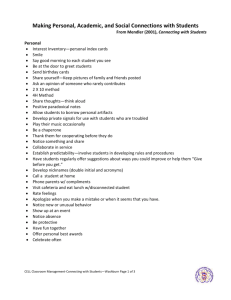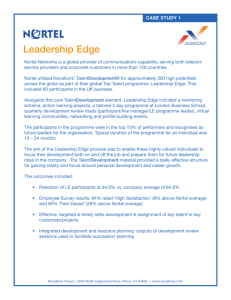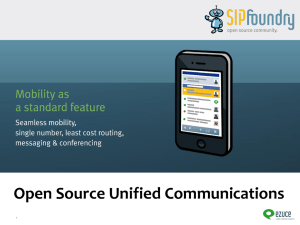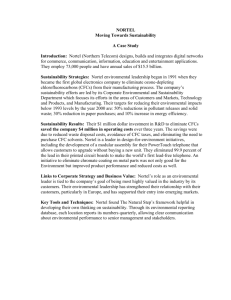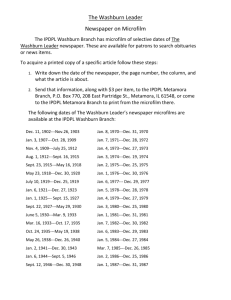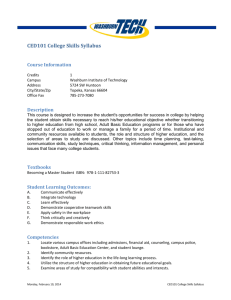Telephone System Technology Refresh
advertisement
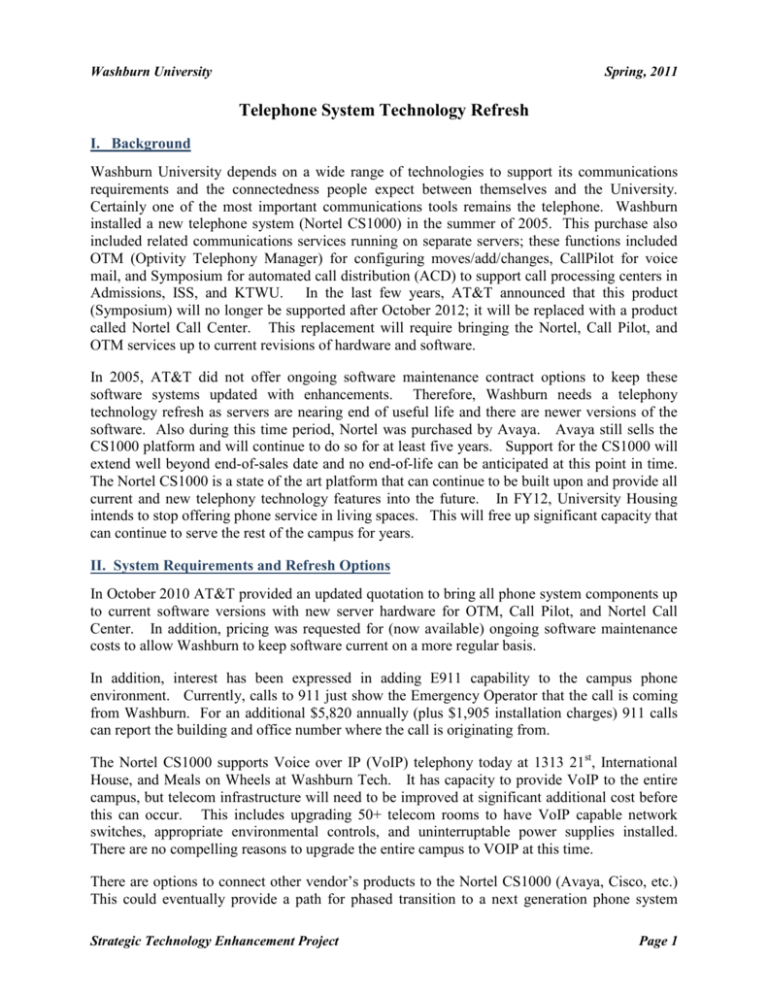
Washburn University Spring, 2011 Telephone System Technology Refresh I. Background Washburn University depends on a wide range of technologies to support its communications requirements and the connectedness people expect between themselves and the University. Certainly one of the most important communications tools remains the telephone. Washburn installed a new telephone system (Nortel CS1000) in the summer of 2005. This purchase also included related communications services running on separate servers; these functions included OTM (Optivity Telephony Manager) for configuring moves/add/changes, CallPilot for voice mail, and Symposium for automated call distribution (ACD) to support call processing centers in Admissions, ISS, and KTWU. In the last few years, AT&T announced that this product (Symposium) will no longer be supported after October 2012; it will be replaced with a product called Nortel Call Center. This replacement will require bringing the Nortel, Call Pilot, and OTM services up to current revisions of hardware and software. In 2005, AT&T did not offer ongoing software maintenance contract options to keep these software systems updated with enhancements. Therefore, Washburn needs a telephony technology refresh as servers are nearing end of useful life and there are newer versions of the software. Also during this time period, Nortel was purchased by Avaya. Avaya still sells the CS1000 platform and will continue to do so for at least five years. Support for the CS1000 will extend well beyond end-of-sales date and no end-of-life can be anticipated at this point in time. The Nortel CS1000 is a state of the art platform that can continue to be built upon and provide all current and new telephony technology features into the future. In FY12, University Housing intends to stop offering phone service in living spaces. This will free up significant capacity that can continue to serve the rest of the campus for years. II. System Requirements and Refresh Options In October 2010 AT&T provided an updated quotation to bring all phone system components up to current software versions with new server hardware for OTM, Call Pilot, and Nortel Call Center. In addition, pricing was requested for (now available) ongoing software maintenance costs to allow Washburn to keep software current on a more regular basis. In addition, interest has been expressed in adding E911 capability to the campus phone environment. Currently, calls to 911 just show the Emergency Operator that the call is coming from Washburn. For an additional $5,820 annually (plus $1,905 installation charges) 911 calls can report the building and office number where the call is originating from. The Nortel CS1000 supports Voice over IP (VoIP) telephony today at 1313 21st, International House, and Meals on Wheels at Washburn Tech. It has capacity to provide VoIP to the entire campus, but telecom infrastructure will need to be improved at significant additional cost before this can occur. This includes upgrading 50+ telecom rooms to have VoIP capable network switches, appropriate environmental controls, and uninterruptable power supplies installed. There are no compelling reasons to upgrade the entire campus to VOIP at this time. There are options to connect other vendor’s products to the Nortel CS1000 (Avaya, Cisco, etc.) This could eventually provide a path for phased transition to a next generation phone system Strategic Technology Enhancement Project Page 1 Washburn University Spring, 2011 once the Nortel CS1000 is no longer supported (5-10 years away or more). Also, new services might be available from such a future alternate vendor. However, this would add complexity. Washburn only employs a single person (Phyllis Hoffman) to manage the University telephone system and is thus heavily dependent on vendor support for advanced problem solving and troubleshooting. Today, such support requires a single phone call and AT&T will fix it. Adding additional vendors often results in finger pointing, blame shifting, and much reduced quality of service and time to resolution. There is no compelling reason to add a second vendor’s hardware into the phone system environment at this time. III. Proposed Solution The University made a significant investment in the Nortel CS1000 and should continue that investment by purchasing the upgrade proposed by AT&T. The initial investment provided phone services for 6-7 years and the proposed upgrade should do the same, allowing time to save for the next phone infrastructure improvement in the 2016-18 timeframe. Washburn has been setting aside funds every year since 2005 through the Technology budget in anticipation of the time when it is necessary to upgrade telephone software technology. In 2005 the anticipated upgrade cost was $150,000 and the project would be initiated in FY12. Washburn has approved and accrued $130,000 in past funding. However, AT&T acquired Nortel, some of the technology capabilities have changed, and the software costs have increased at a rate higher than expected. Therefore, the total cost will be $180,000 and ISS has decided to extend the planned upgrade into FY13 and spread the remaining $50,000 over two fiscal years. Equipment/Service Cost (estimate): Nortel Software/Hardware upgrades $ 160,000 Expected 5% price increase by fall 2012 8,000 New phone servers 6,000 Emergency 911 installation 2,000 WU Police 911 notification 4,000 Total System Upgrade Cost: (plus ongoing cost of $485/mo) $ 180,000 Prior year phone system set-asides - 130,000 Funded over past 4 fiscal years Total new funds needed: $ 50,000 Required over next 2 fiscal years FY12 Request: $ 25,000 IV. Implementation The following project steps are proposed: 1. Share this proposal with the Technology Steering Committee for feedback (Fall 2011). 2. Include the new pricing (when received) into Technology request budget process for FY12 and FY13. 3. Finalize the software/system upgrade plans in January 2012. 4. Work with AT&T to manage a turnkey implementation by AT&T staff to be complete prior to August 2012. Strategic Technology Enhancement Project Page 2
